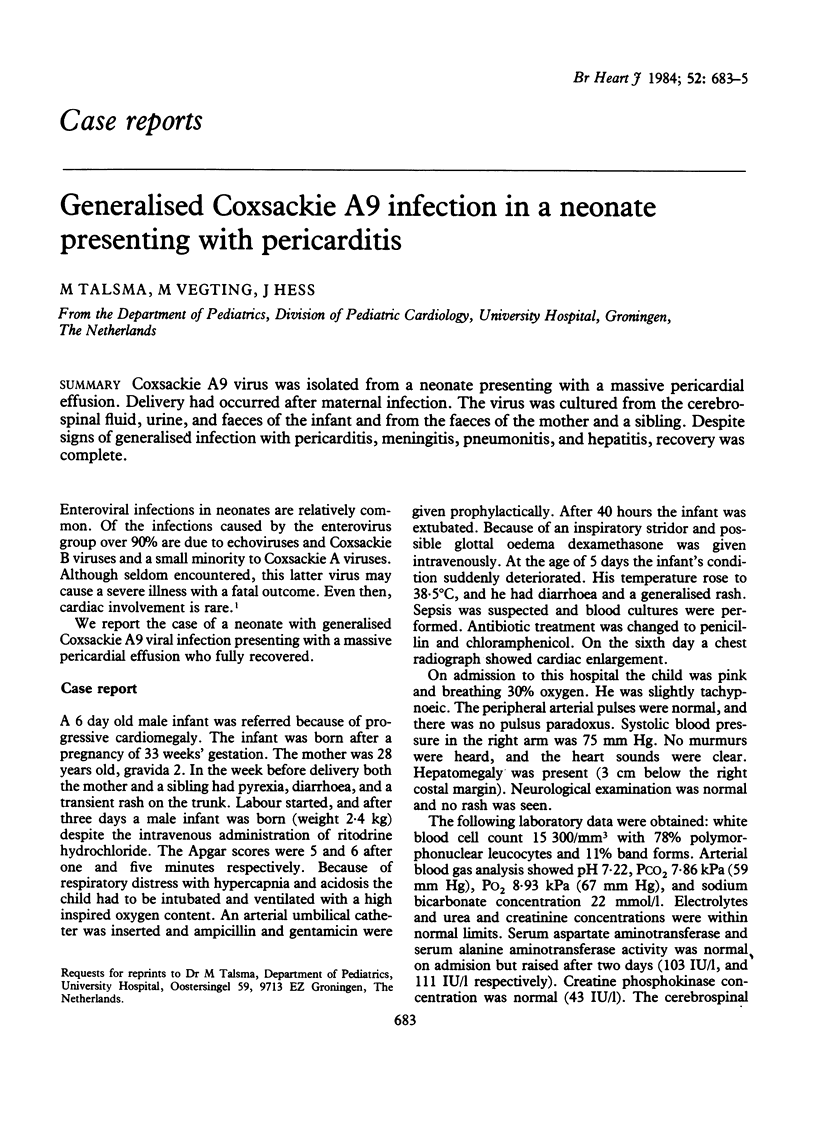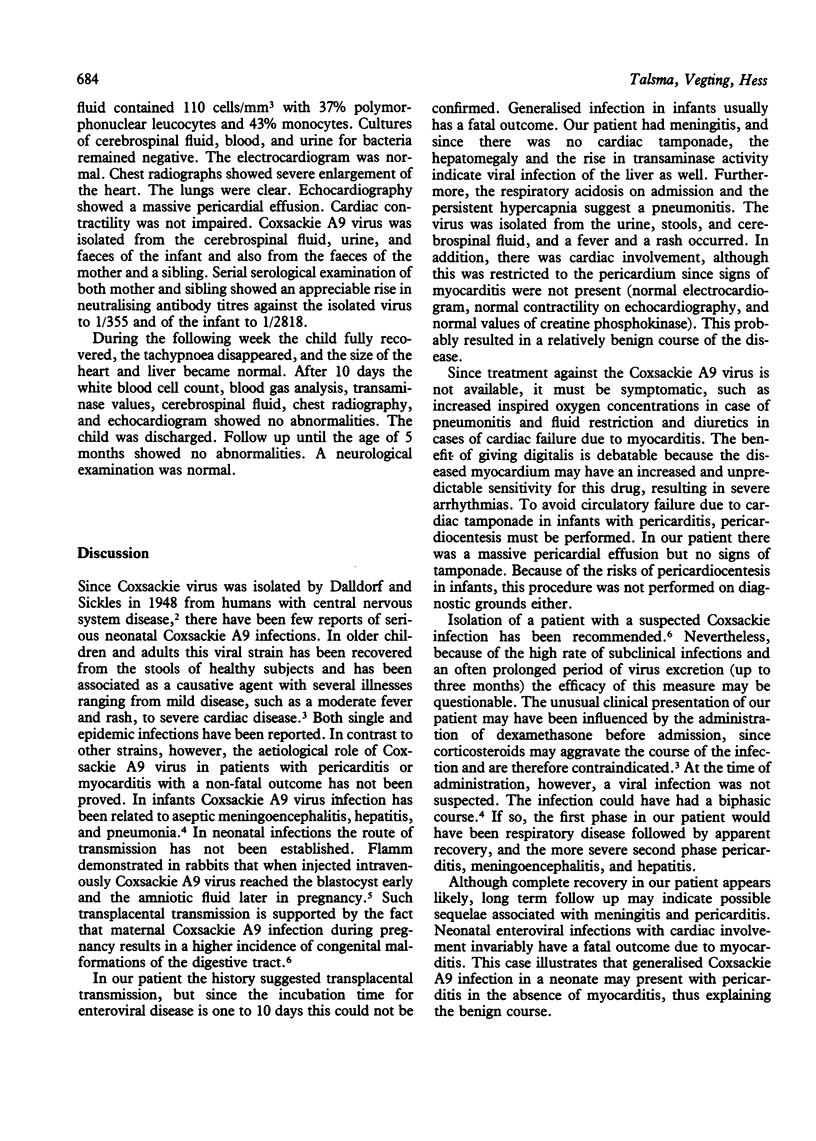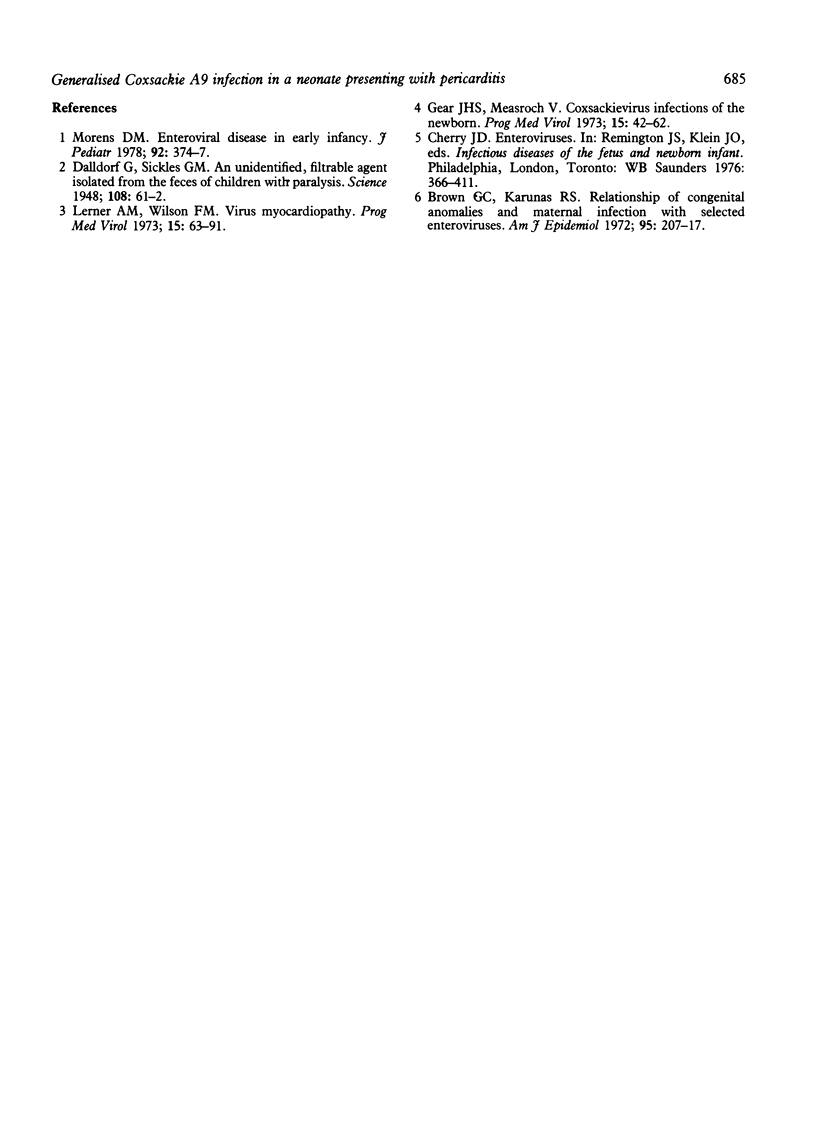Abstract
Coxsackie A9 virus was isolated from a neonate presenting with a massive pericardial effusion. Delivery had occurred after maternal infection. The virus was cultured from the cerebrospinal fluid, urine, and faeces of the infant and from the faeces of the mother and a sibling. Despite signs of generalised infection with pericarditis, meningitis, pneumonitis, and hepatitis, recovery was complete.
Full text
PDF


Selected References
These references are in PubMed. This may not be the complete list of references from this article.
- Brown G. C., Karunas R. S. Relationship of congenital anomalies and maternal infection with selected enteroviruses. Am J Epidemiol. 1972 Mar;95(3):207–217. doi: 10.1093/oxfordjournals.aje.a121388. [DOI] [PubMed] [Google Scholar]
- Dalldorf G., Sickles G. M. An Unidentified, Filtrable Agent Isolated From the Feces of Children With Paralysis. Science. 1948 Jul 16;108(2794):61–62. doi: 10.1126/science.108.2794.61. [DOI] [PubMed] [Google Scholar]
- Gear J. H., Measroch V. Coxsackievirus infections of the newborn. Prog Med Virol. 1973;15:42–62. [PubMed] [Google Scholar]
- Lerner A. M., Wilson F. M. Virus myocardiopathy. Prog Med Virol. 1973;15:63–91. [PubMed] [Google Scholar]
- Morens D. M. Enteroviral disease in early infancy. J Pediatr. 1978 Mar;92(3):374–377. doi: 10.1016/s0022-3476(78)80422-3. [DOI] [PubMed] [Google Scholar]


